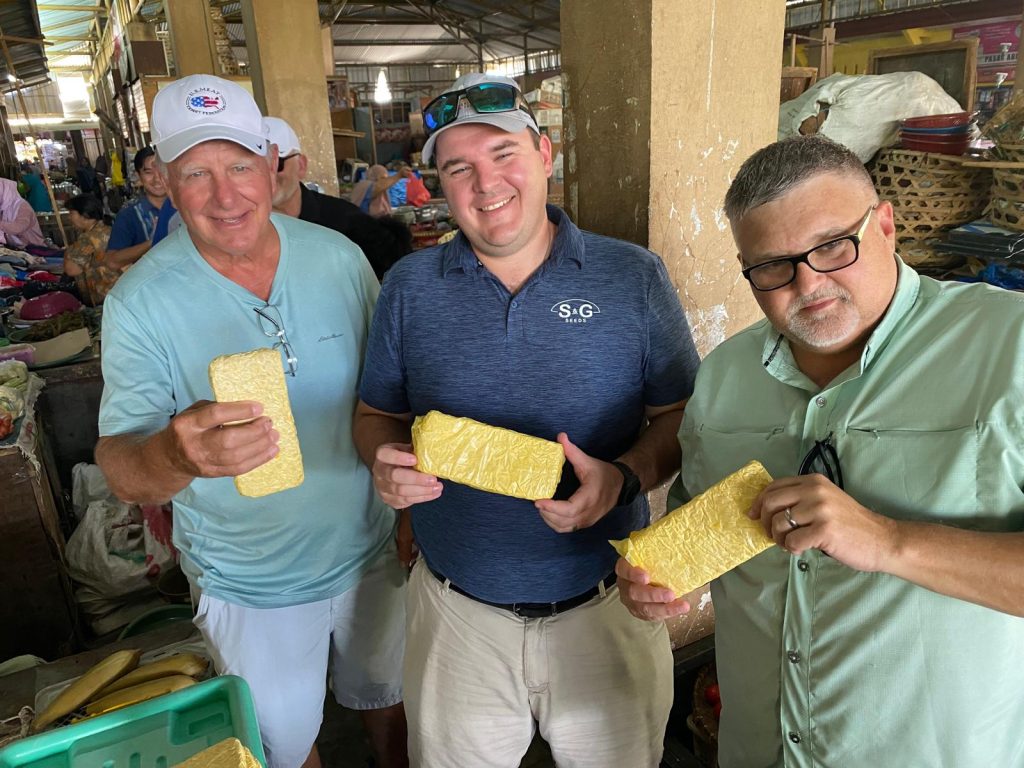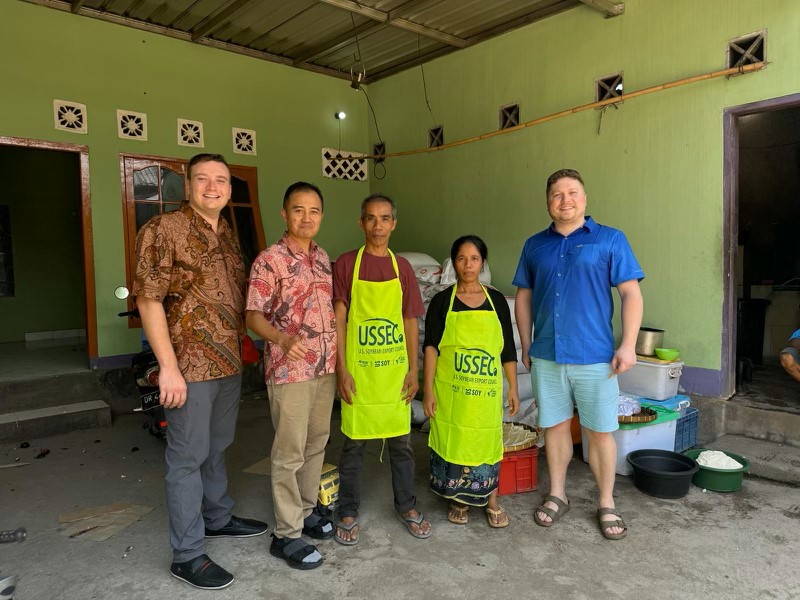U.S. Soy feeds nutritious Indonesian tradition with promotion of tempeh
By Anu Ramasamy, USSEC Communications Lead, Southeast Asia
Tempeh, a staple of Indonesian cuisine, is celebrated for its rich flavor and nutritional benefits. This fermented soy food has been part of Indonesian culture for more than 400 years and is deeply ingrained in the nation’s culinary heritage.

In Southeast Asia, this food is more commonly spelled in English as tempe. But for Western English speakers, adding the “h” at the end ensures the food is pronounced correctly. U.S. Soy farmers who have visited Indonesia have said that deep-fried tempeh resembles fried hash browns.
Tempeh provides Indonesians an affordable source of protein, and its nutrient profile is comparable to beef and chicken.
Indonesia’s consumption of traditional soy foods like tempeh makes it the largest food-use soybean importer in the region. In 2023, Indonesia imported 2.7 million metric tons, or nearly 99.2 million bushels, of soybeans for food use, and more than 85 percent was U.S. Soy. This total includes exports originating from Indiana soybean fields.
At the same time, national tempeh consumption reached close to 1.3 billion kilograms, or nearly 2.9 billion pounds. That put per capita consumption at 7.3 kilograms, or 16.1 pounds, according to the 2023 National Socio-Economic Survey Report from BPS Statistics Indonesia.
About 1 kilogram, or 2.2 pounds, of soybeans is required to produce 1.6 kilograms, or 3.5 pounds, of tempeh, translating to a total of 1.27 million metric tons, or nearly 46.7 million bushels, of soybeans required for tempeh production in 2023.
Making tempeh
Food processors make tempeh using soybeans with the hulls removed. Most tempeh-production facilities receive soybeans in large bags.
First, they fill large barrels with soybeans and water to swell the soybeans. Then, they dry the soybeans on a screen and work them with paddles to reach the desired consistency.
After working the soybeans, they measure and bag them in rectangular bags. Then, they add the yeast that ferments the soybeans and let them sit for about 48 hours. By then, the soybeans have become solid, holding their shape in the small bricks that tempeh is known for.
The finished tempeh can then be sold fresh, or frozen for longer-term storage.
Best practices for making tempeh

Since 2008, USSEC has collaborated with the Indonesian Tempeh Forum (ITF), which promotes the cultural heritage of and consumer appreciation for tempeh, to support the industry.
About 112,000 micro, small and medium-sized businesses employ roughly 240,000 people to make tempeh locally throughout the country, according to Indonesia’s 2016 Economic Census. Most enterprises produce between 20 and 100 kilograms, or between 44 and 220 pounds, of tempeh daily.
The tempeh fermentation process involves live microbes, making adherence to best production practices essential.
With ITF, USSEC offers technical assistance and regular training courses to enhance production methods and tempeh quality, thanks in part to soy checkoff funding. For example, maintaining clean production and fermentation rooms with controlled movement between dry and wet areas is essential.
This support aims to enhance production methods and product quality, especially when using U.S. Soy. Supporting small businesses also ensures Indonesian consumers can continue to enjoy tempeh.
Celebrating cultural heritage
Tempeh holds immense significance in Indonesia. That’s why it has been nominated for recognition as a cultural heritage food by the United Nations Educational, Scientific and Cultural Organization (USESCO).
UNESCO recognition would affirm tempeh’s cultural importance. It would also encourage continued innovation and improvement in production practices. Globally, acceptance of this nomination would place tempeh alongside other culturally iconic foods like Japan’s miso and natto.
USSEC is proud to support the UNESCO nomination process for tempeh through providing information and building awareness.
At the same time USSEC remains committed to supporting tempeh production and small-scale producers across Indonesia. The nomination results are expected to be announced in 2025.
This potential recognition is one more reason to try tempeh when visiting Indonesia or an Indonesian restaurant like Mayasari Indonesian Grill in Greensburg, Ind. Or, look for frozen tempeh from companies like Tempe Azaki, an Indonesian company that works closely with USSEC, in local stores to try it anytime.
Posted: November 16, 2024
Category: Indiana Corn and Soybean Post - November 2024, ISA, Market Development, News



